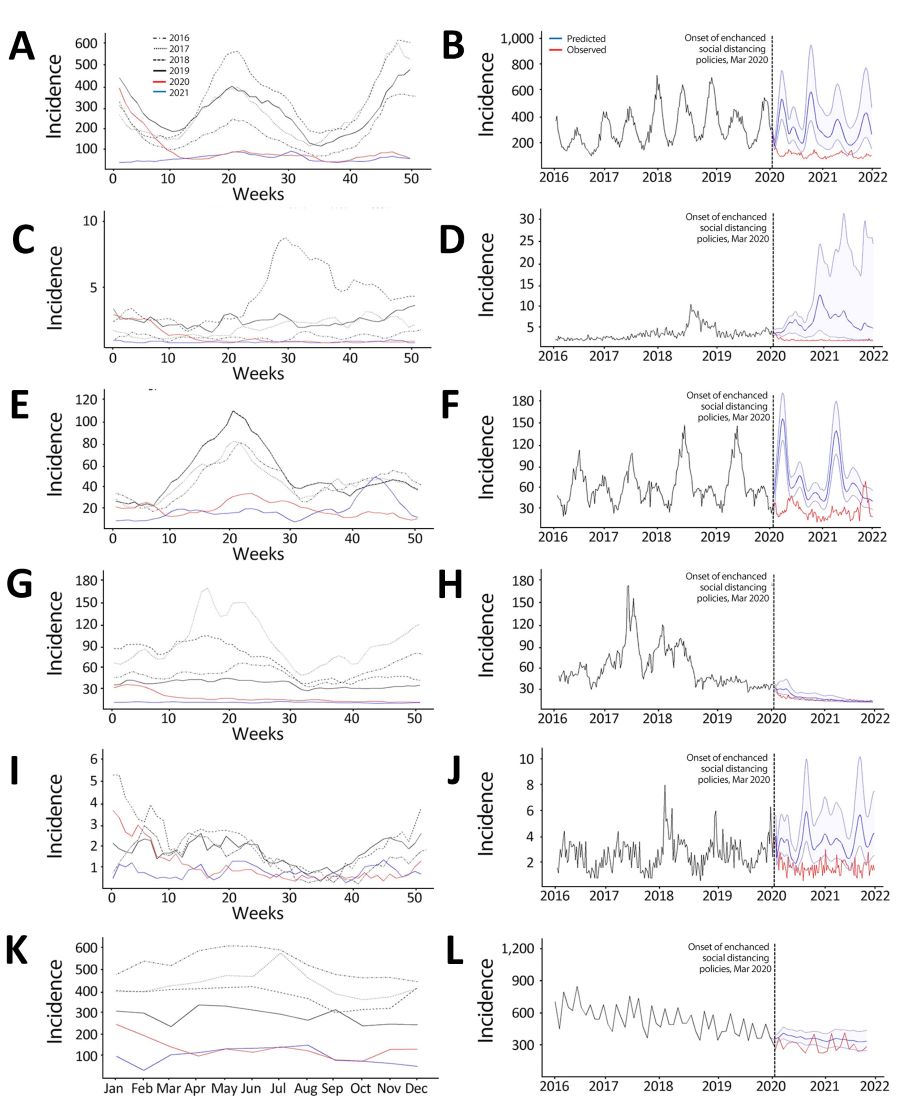Volume 30, Number 6—June 2024
Research
Trends in Nationally Notifiable Infectious Diseases in Humans and Animals during COVID-19 Pandemic, South Korea
Figure 2

Figure 2. Incidence trends (cases/1 million population) in 6 nationally notifiable respiratory infectious diseases in humans before and during the COVID-19 pandemic, South Korea. A, C, E, G, I) Weekly incidence levels for various diseases retrieved from the national surveillance system for 2016–2019 versus 2020–2021. B, D, F, H, J) Observed and predicted weekly incidence levels during 2016–2021. A, B) varicella; C, D) pertussis; E, F) mumps; G, H) scarlet fever; I, J) invasive pneumococcal diseases. K) Monthly incidence levels of tuberculosis; L) observed and predicted monthly incidence levels of tuberculosis.
Page created: May 02, 2024
Page updated: May 22, 2024
Page reviewed: May 22, 2024
The conclusions, findings, and opinions expressed by authors contributing to this journal do not necessarily reflect the official position of the U.S. Department of Health and Human Services, the Public Health Service, the Centers for Disease Control and Prevention, or the authors' affiliated institutions. Use of trade names is for identification only and does not imply endorsement by any of the groups named above.